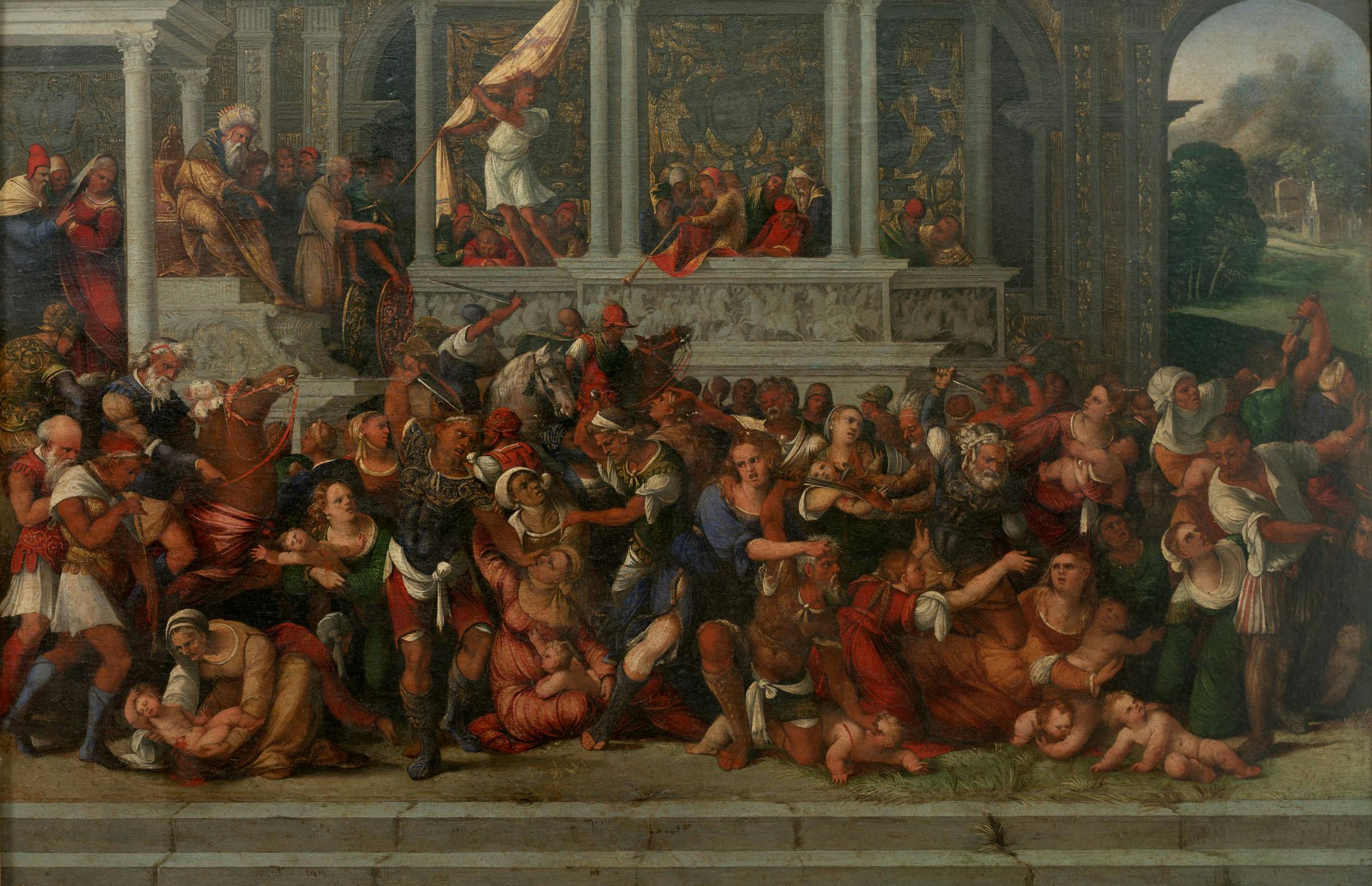Massacre of the Innocents
Ludovico Mazzolino (Ferrara circa 1480 - 1528/1530) or Ferrara Artist (before 1525)
The scene is agitated and overwhelming. The refined culture of the painter, a connoisseur of ancient art, emerges from the preciousness of the relief friezes adorning the architecture in the background, as well as from the armour and shields of the soldiers who are executing the massacre. In particular, the tangle of bodies recalls the complex and dynamic compositions of Roman sarcophagi, but also the frescoes by Raphael and his School made for the Vatican, which were also inspired by classical antiquity and known thanks to the prints that circulated among workshops and Renaissance courts. The physicality and positioning of the figures twisted around each other differentiates this work from the other representations with biblical theme made by the artist, such as the more dynamic Massacre of the Innocents preserved in the Rijksmuseum in Amsterdam inv. SK-C-1363 or in the Crossing of the Red Sea (Dublin, National Gallery of Ireland, inv. NGI.666), whose fluctuating scene hints at sonorous, almost musical references, even within the dramatic tones of the whole painting. However, the faces and poses of the women suffering the slaughter in the Uffizi's Massacre of the Innocents may resemble those of the money-changers painted by Mazzolino in The Driving of the Merchants from the Temple (Alnwick Castle, The Northumberland Collection, inv. 593). If Mazzolino is generally recognized as the inventor of this work, its attribution is not as unanimous due to a discrepancy with other paintings made by the artist on the same theme, so much so that the panel has also been associated to the school of Battista Dossi.
From Cardinal Ippolito d'Este, to whom it belonged since at least 1525, the Massacre of the Innocents passed to his nephew Cardinal Luigi d'Este. Later the painting entered the collection of Ferdinando de' Medici, who used to live in the famous Villa Medici in Rome, before leaving the cardinal office to succeed his brother Francesco as Grand Duke of Tuscany. Ferdinando left a large part of his collection in the splendid Roman villa, but in 1607 he transferred the work, for which he must have had a special predilection, to his Florentine collections.
S. Zamboni, Ludovico Mazzolino, Milano 1968, pp. 42-43, n. 26, tav. 63a; A. Cecchi, La collezione di quadri di villa Medici, in Villa Medici. Il sogno di un cardinale. Collezioni e artisti di Ferdinando de’ Medici (Roma, Villa Medici, 17 novembre 1999 - 5 marzo 2000), a cura di M. Hochmann, Roma 1999, p. 63; Strage degli Innocenti, pp. 246-247, fig. 58; C. Occhipinti, Jacopo Palma il Vecchio: «Ritratti di doe signore antiche». Vicende estensi tra Ferrara, Parigi e Roma (1535-1579), in “Studi di Memofonte. Rivista on-line semestrale”, 5, 2010, pp. 3-5 (https://www.memofonte.it/studi-di-memofonte/numero-5-2010/); Strage degli innocenti – Luteri Giovanni Battista Detto Battista Dossi (cerchia), “Catalogo Generale dei Beni Culturali”,(https://catalogo.beniculturali.it/detail/HistoricOrArtisticProperty/0900287552)
